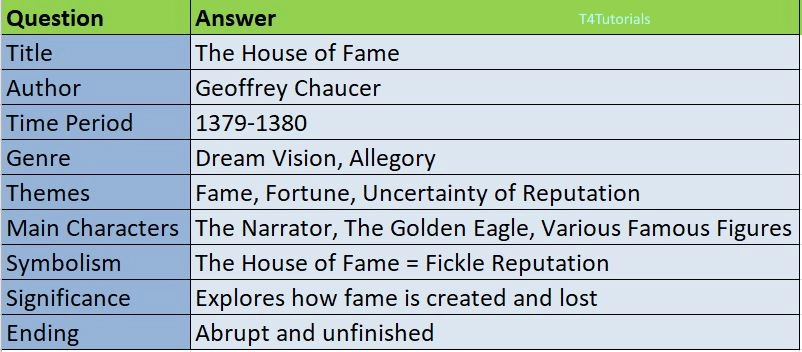Summary:
The House of Fame is a dream vision poem written by Geoffrey Chaucer between 1379 and 1380. The poem is divided into three books and explores themes of fame, fortune, and the unreliability of human reputation. The narrator, likely Chaucer himself, dreams of being taken to the House of Fame by a golden eagle.
- Book I: The narrator dreams that he is in a glass temple, where he sees carvings of Virgil’s Aeneid, recounting the story of Aeneas and Dido. He ponders how fame is created and sustained.
- Book II: A giant golden eagle appears and carries the narrator to the House of Fame. While flying, the eagle explains that fame and rumor spread through sound waves and the wind.
- Book III: The narrator reaches the House of Fame, a magnificent palace where people are rewarded or ignored based on arbitrary and unpredictable forces. He sees historical and mythological figures whose fates depend on Fortune and Reputation rather than merit. The poem ends abruptly, leaving the reader uncertain about the final message.
This poem is considered one of Chaucer’s most philosophical works, questioning how fame is created and whether it holds true value.

10
Score: 0
Attempted: 0/10
Subscribe
Score: 0
Attempted: 0/10
Subscribe
| Question | Answer |
| Title | The House of Fame |
| Author | Geoffrey Chaucer |
| Time Period | 1379-1380 |
| Genre | Dream Vision, Allegory |
| Themes | Fame, Fortune, Uncertainty of Reputation |
| Main Characters | The Narrator, The Golden Eagle, Various Famous Figures |
| Symbolism | The House of Fame = Fickle Reputation |
| Significance | Explores how fame is created and lost |
| Ending | Abrupt and unfinished |